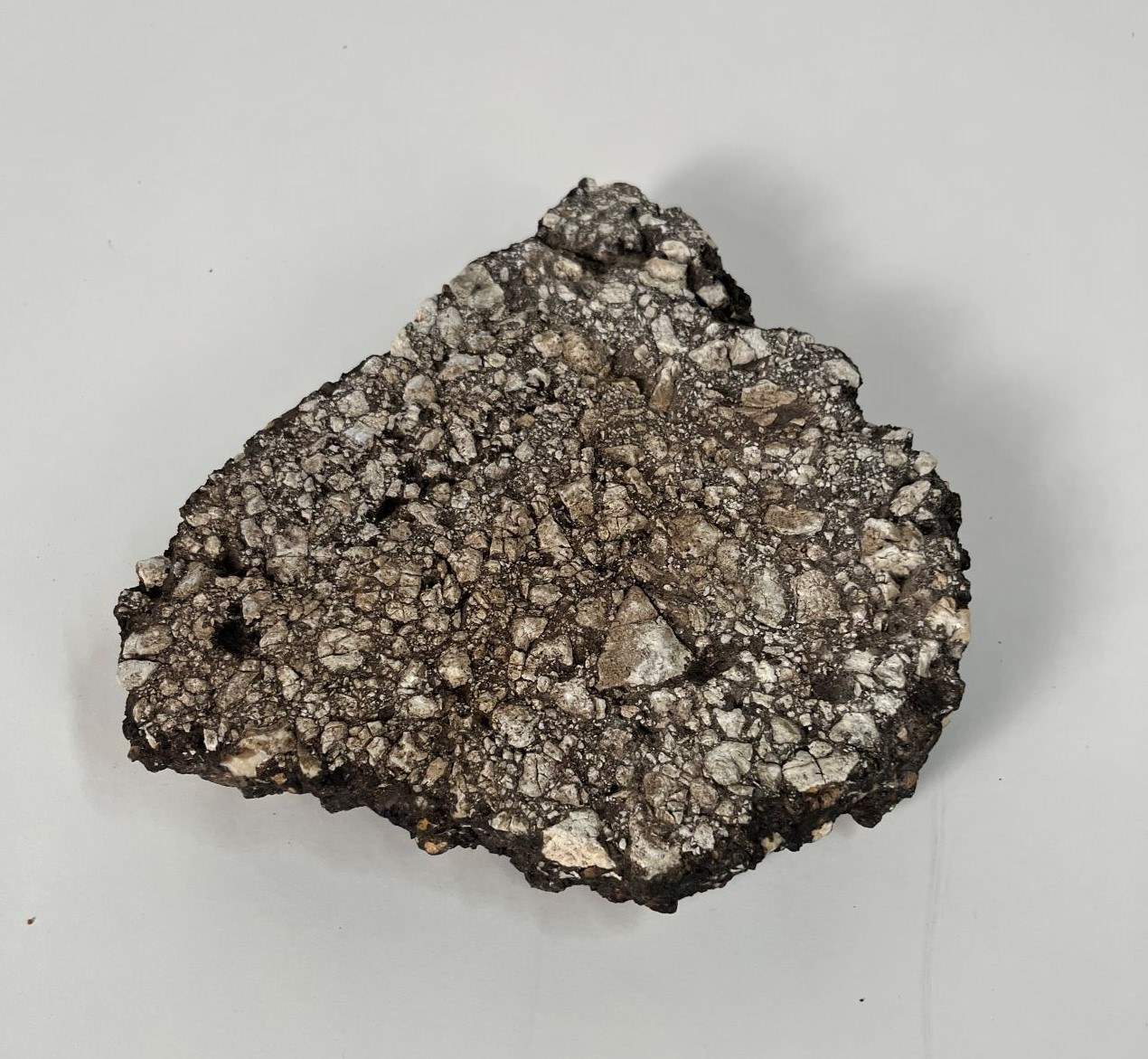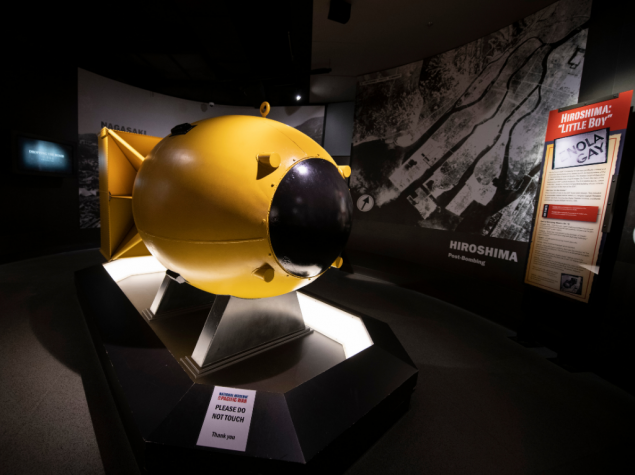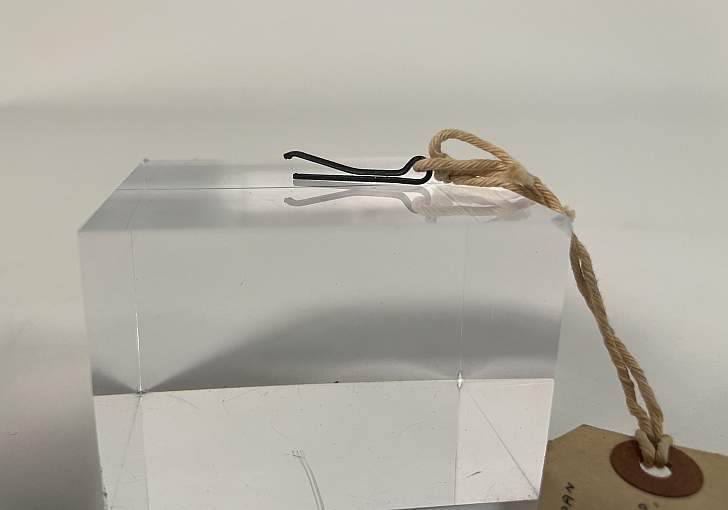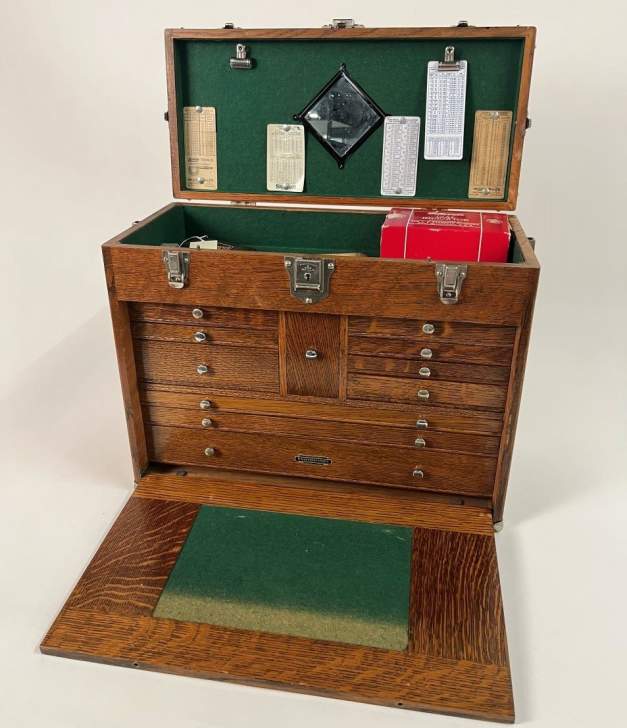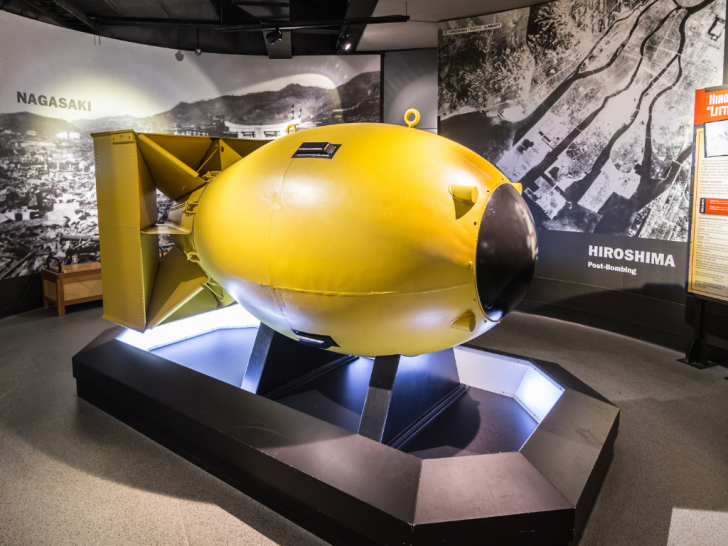Crushed coral runway fragment from North Field, Tinian. On 6 August 1945, the Enola Gay took off from there to drop “Little Boy” on Hiroshima, Japan. Tinian had been captured by the Americans a year before in 1944 and quickly transformed into the largest air base in the world. Codenamed “Destination”, Tinian was both close to Japan and easy to supply by sea, making it the best choice for the launch site of the new atomic bombs.
The Big Decision: Coral Runway Fragment
This section describes the 509th Composite Group and the decision to use the atomic bombs.
Overview
The 509th Composite Group was activated on 17 December 1944 in Utah under the command of Colonel Paul W. Tibbets. It was made of men from different units across the military. Their mission: training to drop the atomic bomb on Japan.

B-29 Enola Gay on the runway at Tinian, August 1945. From the Nautilus Institute of Security and Sustainability.
Like the Manhattan Project itself, the mission of the 509th Composite Group was a secret to most of the people in it. Tibbets had to prepare his men for all the unique aspects of the new weapon without telling them what they were training for. The group used fake bombs and practiced special tactics necessary for this mission, but no one could guess the exact reason for the odd maneuvers. The 509th moved to a base on Tinian for more specialized training, awaiting orders from the few people who knew their real purpose.

Clement Attlee, Harry S. Truman, and Josef Stalin at the Potsdam Conference. US Army Signal Corps photo from the Truman Library
In the summer of 1945, the major Allied leaders met in Potsdam, Germany to discuss terms for the Japanese surrender. President Truman informed the Allies that the Americans had a new weapon which could devastate the Japanese if they refused to surrender unconditionally. Japan rejected the Potsdam Declaration, and Truman authorized the use of the atomic bomb after 3 August.
Coral Runway Fragment
Exhibit Preview
The Atomic Bomb Exhibit
This exhibit tells the story of the atomic bomb from the development stages to the effects of the bombings on Hiroshima and Nagasaki in August 1945....

